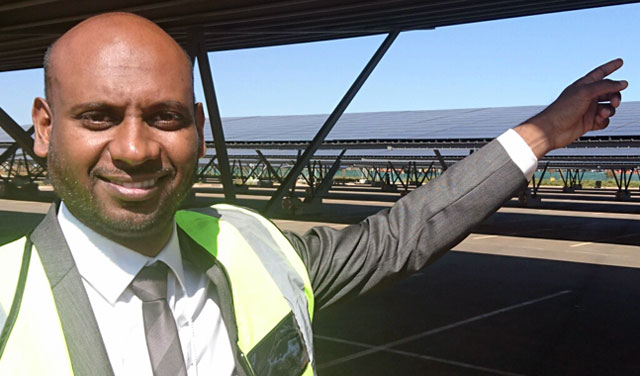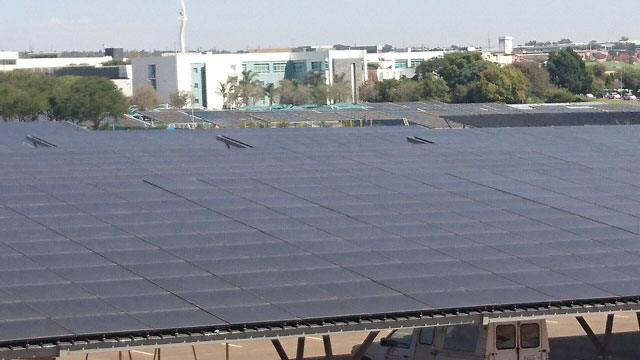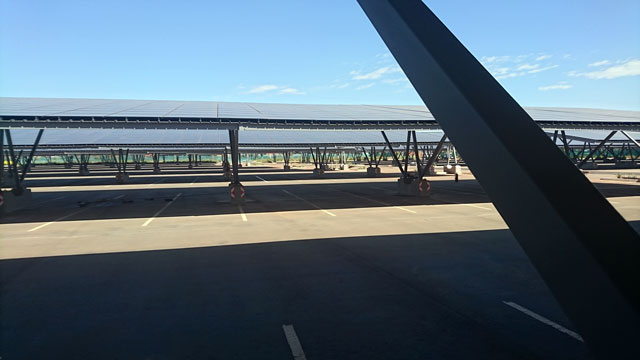
Telkom has begun a project that will eventually take its sprawling head office campus in Centurion, near Pretoria, completely off the grid.
The project, the first phase of which involves the installation of vast arrays of solar PV panels in the parking lots around its head office buildings, is meant over time to generate all of Telkom’s power requirements.
The site will also house electric vehicle charging points and, during the second phase of the project, even looks set to be powered by natural gas piped in from Mozambique.
The company, which recently moved to the campus from downtown Pretoria, houses almost 6 000 employees.
The first phase of the solar PV farm, which covers 1 800 carports, will go live in next couple of weeks.
The entire first phase of the project, generating 3MW of electricity, will be online by July.
Telkom’s campus has a peak requirement of between 7,2MW and 7,4MW, which includes all the offices as well as two data centres. The campus has a base load requirement of about 4MW.
Telkom’s group executive for corporate real estate services, Praven Naidoo, tells TechCentral that the electricity generated by the solar PV will be fed directly into the campus’s power ring and not stored. Additional requirements above and beyond what is generated on-site will be sourced from Eskom.
During phase two, Telkom is looking at “tri-generation”, where it also feeds gas onto the campus.
“Each gas engine will give us 1MW of power, and we intend buying three gas engines,” Naidoo says. “This will give us 1,5MW of free cooling and free heating as a by-product.”
Telkom would need to extend a gas line from about 3,5km away for this second phase, and an environmental impact assessment must still be conducted, Naidoo says.
The company has also taken steps to reduce demand for electricity by creating an open-plan environment, for example, with large, central air wells. This reduces the requirement for air conditioning to keep workspaces cool. Telkom is also taking advantage of natural light to reduce the need for artificial lighting. Where lighting exists, it is all the low-power LED variety.


Though Telkom declines to say how much it’s spending on the project, saying it’s in a closed period, Naidoo says it is “highly viable commercially”.
“We bought the latest technology in the market to do this. We also bought at scale. Buying 3MW in one hit gives it commercial viability, making our payback period shorter.”
Naidoo says Telkom is reducing its carbon emissions by 15 000t/year. This is equivalent to about 1 800 homes, he says.
Telkom is also considering an initiative to harvest rainwater from the solar carports and using this for applications such as cooling its data centres.
Next in line is rolling out the concept to other Telkom sites around the country, including other data centre facilities and some of its exchanges. This is being discussed at a high level at Telkom, though no specific decisions have been made yet.
At the same time, Telkom is putting in six electric car charging points around the campus.
Employees and visitors with electric vehicles can charge for free. “If it is taken up, we will add more charging points,” Naidoo says. “We want to entice employees to buy electric cars.”
Shuttles around the campus are already electric, and Telkom has started offering a free shuttle service to take employees and customers from the Centurion Gautrain station to the campus. These shuttles run every 30 minutes during peak times. — © 2016 NewsCentral Media




